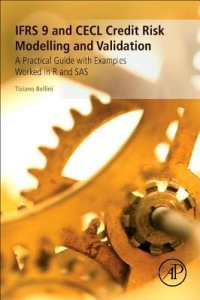
Ebook: How to Model and Validate Expected Credit Losses for IFRS 9 and CECL : A Practical Guide with Examples Worked in R and SAS
Author: Tiziano Bellini
- Year: 2019
- Publisher: Academic Press
- Edition: Paperback
- Language: English
- pdf
How to Model and Validate Expected Credit Losses for IFRS 9 and CECL: A Practical Guide with Examples Worked in R and SAScovers a hot topic in risk management. The IFRS 9 expected credit loss accounting principle (going live in 2018) and the US CECL standard (going live in 2020) require creditors to adopt a new perspective in assessing their credit exposures. The book explores the best modeling process, including the most common statistical techniques used in estimating expected credit losses. A practical Excel-based approach encourages non-technical professionals to grasp the key concepts required to understand, challenge and validate these models.
Additionally, the reader with broader modeling experience will benefit from a more technical dissertation accompanied with cases worked in SAS and R (the software packages most commonly used by credit risk managers to develop their models).
Offers a broad survey that explains which models work best for mortgage, small business, cards, commercial real estate, commercial loans and other credit vehicles
Concentrates on specific aspects of the model, with each chapter building upon earlier chapters
Provides a non-technical approach to enable readers to perform the review, validation and audit of models
Additionally, the reader with broader modeling experience will benefit from a more technical dissertation accompanied with cases worked in SAS and R (the software packages most commonly used by credit risk managers to develop their models).
Offers a broad survey that explains which models work best for mortgage, small business, cards, commercial real estate, commercial loans and other credit vehicles
Concentrates on specific aspects of the model, with each chapter building upon earlier chapters
Provides a non-technical approach to enable readers to perform the review, validation and audit of models
Download the book How to Model and Validate Expected Credit Losses for IFRS 9 and CECL : A Practical Guide with Examples Worked in R and SAS for free or read online
Continue reading on any device:

Last viewed books
Related books
{related-news}
Comments (0)